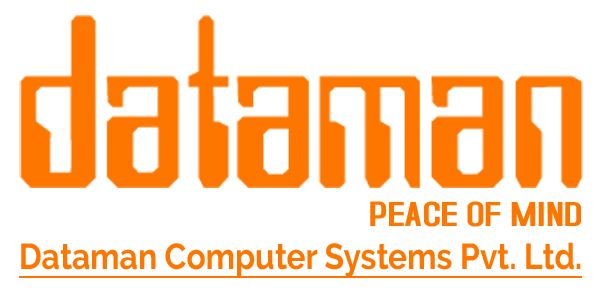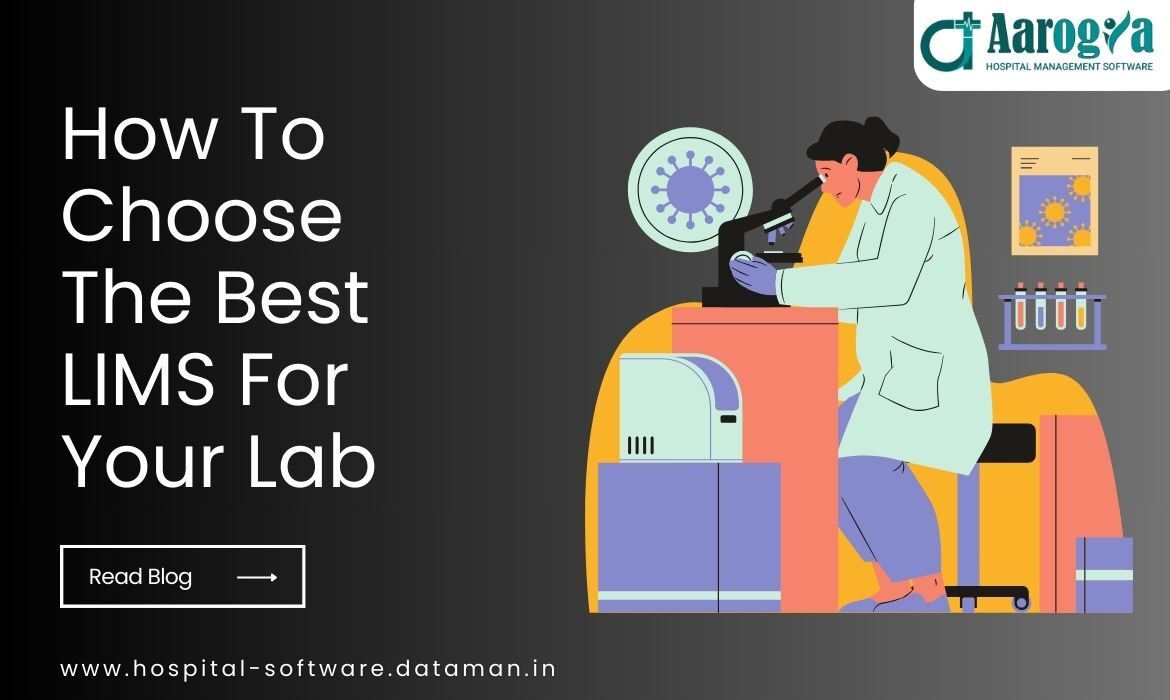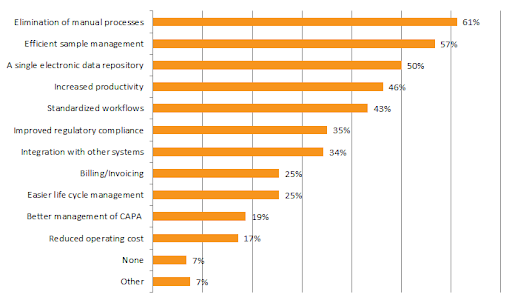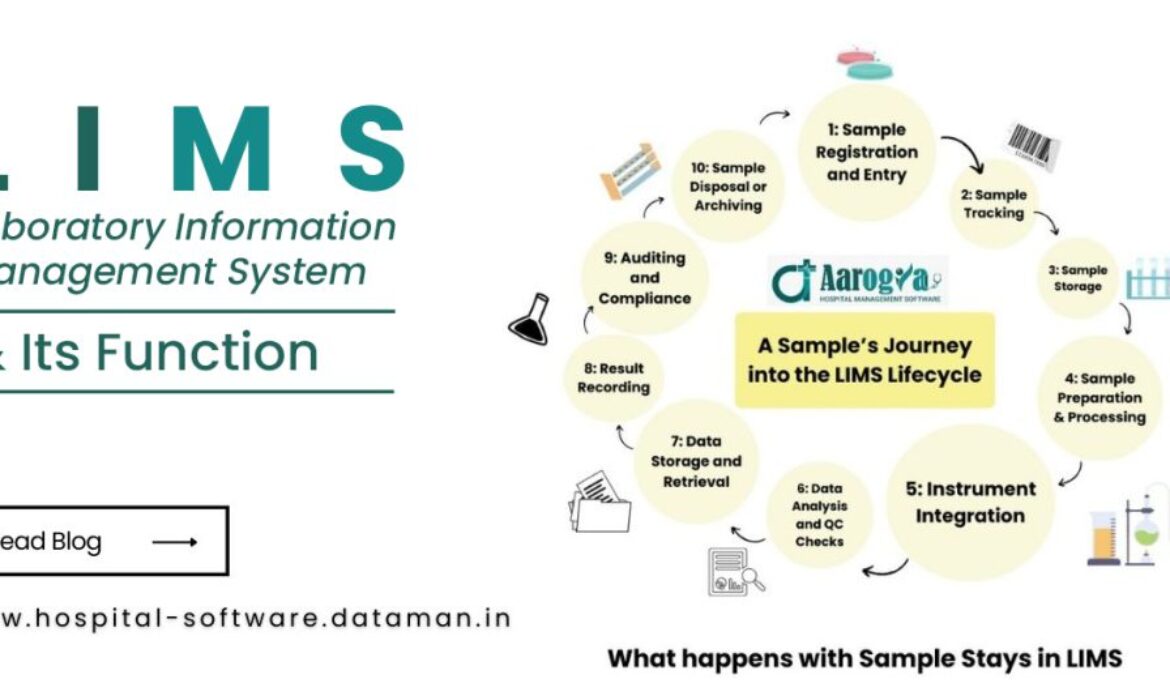Empowering Women’s Health Through Gynaecology Software
In the last few decades, we are getting more and more concerned and aware about women’s health. Many women are awakening to the fact that a woman’s body requires special care and attention to specific needs. Women’s bodies are susceptible to frequent hormonal changes due to the menstrual cycle and pregnancy. Every phase requires aligned care and knowledge.
On top of that, the ever stressful life phases, sedentary lifestyle and several societal & environmental factors have made women more prone to recurrent physical discomforts requiring highly needed visits to a Gynecologist.
Therefore, with an ever increasing number of women visiting, Gynaecology department has become one of the most important and sought after hospital departments requiring technological support. Since the data and information handled by this department is sensitive and requires patient’s trust, a gynecologist’s clinic needs Gynaecology Software tailored to meet required specific needs.
The significance and value provided by Gynaecology Software can be seen in the research study report, which indicated that the Global Gynecology Software Market is projected to experience strong growth at a CAGR of 9.2% from 2022-2032 for various factors such as increasing adoption of digital technology in healthcare propelled by several government initiatives, rise in chronic gynecological diseases and so forth.
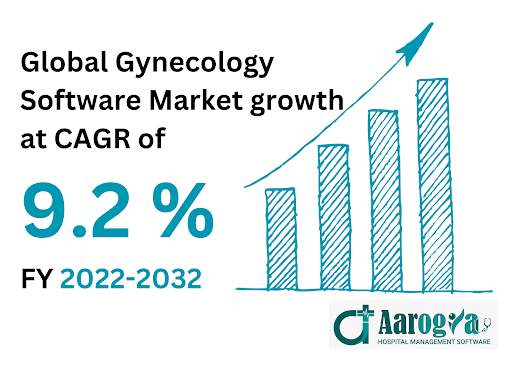
What is Gynaecology Software?
Gynecology Software has emerged as a powerful tool, streamlining processes, enhancing patient care, providing data security and contributing to improved outcomes. This software solution is tailored to meet the unique needs of gynecologists, offering a comprehensive and integrated approach to managing patient information, administrative tasks, and clinical decision-making.
There are certain special features along with general ones that are specifically required by Gynaecologists to keep detailed medical records of their patients. Some of which we are briefly discussing here.
What are the advantages & features of Gynaecology Software?
1. Streamlining Administrative Tasks: One of the primary advantages of gynecology software is its ability to streamline administrative tasks. From appointment scheduling to billing and insurance management, these software solutions automate routine processes, allowing healthcare providers to focus more on patient care. With features like electronic health records (EHR) and practice management modules, gynecologists can efficiently manage patient information, reducing paperwork and minimizing errors.
A 2023 study by HIMSS Analytics found that physicians using EHRs spend 22% less time on administrative tasks compared to those using paper charts.
2. Electronic Health Records (EHR): Gynecology software incorporates electronic health records, a digital version of a patient’s paper chart. EHRs provide a comprehensive overview of a patient’s medical history, including past illnesses, surgeries, medications, and reproductive health data. This centralized information enables healthcare providers to make well-informed decisions, coordinate care, and improve overall patient outcomes. Additionally, EHRs enhance communication between different healthcare providers, promoting a more collaborative approach to women’s healthcare.
3. Telehealth Integration: In response to the global shift towards remote healthcare, many gynecology software platforms now offer telehealth capabilities. This feature allows gynecologists to conduct virtual consultations, enabling patients to receive medical advice and discuss concerns from the comfort of their homes. Telehealth not only improves accessibility to healthcare but also facilitates timely interventions, particularly in cases where in-person visits may be challenging.
As per a report “Reinventing Healthcare Delivery With Telemedicine” by Telemedicine Society of India (TSI) and Practo, there has been a 3x increase in the number of people using online consultation in India.

4. Patient Portal Access: Gynecology software often includes patient portals, empowering individuals to actively engage in their healthcare journey. Through these portals, patients can access their medical records, schedule appointments, receive test results, and communicate with their healthcare providers. This transparency fosters a more collaborative patient-physician relationship, enhancing overall patient satisfaction and adherence to treatment plans.
A survey by Zocdoc found that 82% of patients consider online appointment scheduling a valuable feature when choosing a healthcare provider.
5. Clinical Decision Support: Gynecologists face complex and nuanced decision-making in their practice. Gynecology software incorporates clinical decision support systems that leverage algorithms and medical databases to provide evidence-based recommendations. This assists healthcare providers in diagnosing conditions, selecting appropriate treatments, and staying updated on the latest medical guidelines, ultimately contributing to better patient outcomes.
6. Reproductive Health Tracking: For women trying to conceive or manage reproductive health concerns, gynecology software often includes features for tracking menstrual cycles, ovulation, and fertility. These tools empower both patients and healthcare providers with valuable insights into menstrual and reproductive patterns, aiding in family planning, fertility treatments, and addressing underlying issues related to reproductive health.
7. Data Security and Compliance: The sensitive nature of gynecological information emphasizes the importance of robust security measures within gynecology software. These solutions adhere to strict data security and privacy standards, ensuring the confidentiality and integrity of patient information. Compliance with regulations such as the Health Insurance Portability and Accountability Act (HIPAA) is integral to instilling trust in both patients and healthcare providers.
Also Read: Top 5 Hospital Management Software in India
Conclusion:
Gynecology Software has emerged as a pivotal component in advancing women’s healthcare, offering a range of features that enhance efficiency, patient engagement, and clinical decision-making. As technology continues to evolve, gynecologists and healthcare organizations must embrace these digital tools to stay at the forefront of providing comprehensive and patient-centric care.
This digital companion in gynecology ensures that the journey towards women’s wellness is not just efficient but also empathetic – a perfect blend of science and compassion in the service of women’s health.
Choosing the best LIMS Software & Why an integrated HMIS LIMS
If you’re someone with the vision to start a pathological laboratory or if you’ve already started setting up, congratulations on coming this far! Because starting a Lab is no joke. It requires a good amount of work, capital and brainstorming to make important decisions. Therefore, you deserve to get the best output possible, and your lab a faithful technological friend, i.e. Laboratory Information Management System (LIMS).
The significance and value provided by LIMS can be estimated from the study report which indicates that LIMS has provided a number of workflow efficiencies including report results that:
- 61% of LIMS users benefited from the elimination of manual processes,
- 57% gained improvements in their sample management strategy, and
- 46% showed a significant increase in productivity within their laboratory environment.
So, sit back and relax because here we’re going to help you in choosing the best LIMS Software for your lab and we’ll also discuss the advantages of choosing an integrated HMIS LIMS.
But first, what is LIMS?
LIMS is an integrated software solution designed to manage lab data and processes seamlessly. It automates workflows, securely manages patient details, tracks sample location and its associated data, helps in maintaining compliance, integrates instruments and provides precision and accuracy in results. LIMS improves overall efficiency and productivity of labs. Hence, a Laboratory Information System is what you need to get the best out of your laboratory.
If you are not much acquainted with LIMS or need further explanation, please refer to this article.
Now! If you are new to LIMS, there are many factors to consider and information overload that might be confusing or overwhelming you.
Therefore, in this article we are providing you with a guide containing points and questions to consider and keep in mind when you’re searching for the best LIMS for your lab:
Become Clear with Present And Future Needs Of Your Lab| Know Your Lab
The truth is, there is no such thing as “the best” LIMS in the market. Ultimately, it all depends on you and your lab’s requirements. It’s important that you sit down and take an inventory of your laboratory’s requirements and the vision you have for your lab:
- How many varieties of tests do you want to perform?
- The volume and types of samples your lab is going to handle daily?
- What is the scope of growth in these areas in future?
- How many users are going to access the system?
- Is there any specialized functionality you need for your lab?
Based on those requirements check if the LIMS is flexible, configurable, easy to implement and adaptable to not just present but future needs and requirements as well.
How easy and smooth is it to use the LIMS?
You don’t want to waste your team’s time handling complicated softwares instead of focusing on their expertise. You need a LIMS with simple, integrated and user-friendly interfaces. Search for LIMS with configurable dashboards, intuitive navigation and easy-to-use features as they are preferred by healthcare professionals. Configurable really does beat custom so ensure that LIMS can be “configured” by your team easily based on your needs whenever required. Also try to look for LIMS in which you get training support so that whenever your operators need any help they have a POC.How good is LIMS at tracking and managing sample data?
The primary function of LIMS is comprehensive management of sample data from sample collection to report generation. For deeper understanding on key features of LIMS that assist in sample management, please read. Therefore, check for these key features:How easily does LIMS integrate with the instruments and machines in your lab?
One of the most important features you need to check in LIMS to ensure precision and accuracy in results is instrument integration. It eliminates data silos, and manual data entry errors, creating a smooth and cohesive workflow.
Make sure that the LIMS you are choosing integrates seamlessly and is compatible with your existing laboratory instruments, analysers and other software systems because disconnected systems and lack of communication/integration with key instruments and/or systems is the biggest challenge in LIMS usage for 48% of respondents as per the report.
What is your Budget?
As much as you want the best LIMS for your lab, along with an integration with HMIS, you are still constrained with your budget. The cost is going to include everything from ownership cost, initial setup, initial and ongoing training cost, maintenance to potential upgrades. Also check if any new hardware or network is required and additional modules to be purchased. Evaluate the return on investment (ROI) based on improved efficiency, reduced errors, and overall laboratory productivity.
How the chosen LIMS provides data security and ensures compliance?
It is paramount for your pathological lab to be in compliance with the regulations, such as NABL, HIPAA. Ensure that the LIMS you are choosing is designed to meet these standards and has Quality Control (QC)/ Quality Assurance (QA) features at each step of the sample processing. An integrated LIMS with robust features of data security, audit trails and electronic signatures is the best one out there for you. Also remember that regulatory standards are subject to change, hence, ensure the flexibility of LIMS in this area.
How reliable and trustworthy is the vendor?
Ask for demos from the vendors you’re considering. Don’t just go by their words, ask their existing customers. Questions to consider : How satisfying is the customer support? Is the product keeping up with the ongoing demands of the industry (through frequent updates and upgrades)? How easily do they deal with the issues popping up? How helpful the product has been in managing lab’s data and improving efficiency and overall productivity?
What is the architecture of the LIMS and which one suits you best?
To choose the right architecture consider factors such as the size of the lab, complexity of workflows, data management requirements and budget consideration. There are three common types of LIMS architecture and we are providing a brief idea about them:
On-Premise LIMS: It involves installing and maintaining the software on the lab’s servers and infrastructure. The laboratory is responsible for hardware expenses, security and system maintenance.
The advantages of on-premise LIMS are:
- You’ll have full control over data and
- You can configure the system to meet specific requirements.
And the disadvantages are:
- There’s going to be higher upfront costs for hardware and software,
- Maintenance and updates are the laboratory’s responsibility
- Accessibility would be limited outside the physical laboratory.
Cloud-Based LIMS: Cloud-based LIMS is hosted on remote servers and accessed over the internet. Users connect to the LIMS through web browsers and mobile apps, and the software provider manages maintenance, updates, and security.
The advantages include:
- Lower upfront costs as there is no need for significant hardware investments,
- Accessibility from any location with internet connection
- Automatic updates and maintenance handled by the LIMS provider.
- Better Scalability.
But there are certain considerations to be made:
- There are concerns for data security and compliance depending on the provider.
- The other thing is Cloud-based LIMS depends on internet connectivity for real-time access, so you have to be extra cautious about your lab’s internet connections and availability.
Hybrid LIMS: This architecture combines elements of both on-premise and cloud-based solutions. Critical components may be hosted on-site, while less sensitive functions or data storage may be managed in the cloud.
This provides a balance of advantages of both the above architectures like:
- Offering balance between control and flexibility,
- Allowing customization of on-premise components
- Leveraging the scalability of the cloud and
- Providing enhanced disaster recovery and backup options;
But there’s a key consideration that this may involve additional complexity in terms of system management.
Ultimately the choice depends on the needs, priorities and resources of your lab. Therefore, we suggest you carefully weigh every option and consult with LIMS vendors to determine the best fit for your lab.
Is it Unified? And the advantages of a unified LIMS
Although the primary function of LIMS is sample data management, there’s much more to it. LIMS can help you maintain your inventories and store vendor data, maintain financial receipts, keep a record of the health of your integrated instruments and machines, guide in Quality Control Checks, prevent errors, and provide automatic notifications to patients about their reports. These features when integrated and unified in a single system enhances productivity, efficiency, precision, speed and customer satisfaction altogether. Compare products with these features within your budget range. But there’s something important we want to suggest: there are many companies that provide LIMS integrated in HMIS(Hospital Management Information System). HMIS is a robust and comprehensive software solution integrating data of every department of a hospital at one place. An HMIS will help you find above discussed features alongside your LIMS, hence, saving you the complexity to make your LIMS integrate with your ERP/Financial system, Inventory management softwares and others. You can easily ask for customisations aligned with your specific requirements. There you can easily find many more features like:- Patient Appointment and Registration
- TPA Management
- Purchase and Inventory Management
- Payroll and Financial Reports
Wrapping Up
Selecting the best LIMS for your pathological laboratory requires you to have clarity on your lab’s unique needs, vision, data concerns, scope of growth, priorities, resources and your return on investment expectations. Therefore, we hope considering the above discussed factors may help you make an informed decision that will not only improve efficiency and productivity of your lab but also contribute to enhancing patient care and satisfaction and diagnostic outcomes. Embrace the transformative power of LIMS and allow us to serve you with Aarogya, one of the best LIMS solutions in the market to help you scale and transform your lab to bring the best out of it.Contact us at +91 94154 06213 for a Free Demo or Visit our website for more information.
LIMS(Laboratory Information Management System) and Its Function
Whenever we encounter any health issue, our foremost thought is to visit a doctor knowing we’ll get a solution to our ailment. But how often do we wonder about the sheer importance of labs in our lives?
We are often advised to go through one or several tests for the doctors to properly understand what’s actually happening in our bodies and then prescribe us medicines and treatment accordingly. Doctors and labs work together and are two of the strongest pillars in the healthcare system of our lives.
And if you’ve ever gone to a pathological lab and given a sample to be tested, you can easily recall that the major concerns within your mind are always:
The thing is Lab tests are complex matters and a single patient is subject to one or several tests eg. CBC, TSH, Glucose, Creatinine, Vitamin B12, Vitamin D, Haemoglobin, Blood culture, Electrolyte, Blood Group etc. There are many incidents when the wrong diagnosis or results in reports due to human error has led to further improper medications and treatments worsening a patient’s condition. Hence, Lab processes require a great level of accuracy and precision which is very well provided by LIMS.
So, what truly is LIMS, what are its benefits, key features and how do those features aid lab processes throughout a Sample lifecycle and how LIMS has revolutionized the healthcare system.
What is a Laboratory Information Management System (LIMS)?
Laboratory Information Management System(LIMS) is a comprehensive and integrated software-based solution designed to automate workflow and effectively manage sample collections and associated data for reliable, faster and error-free diagnosis reports.
It streamlines, automates and manages data and information involved in the processes of a lab from patient registration, test masters, lab technician responsible, sample collection, lab test values, and patient reports to receipts and much more.
Aarogya Lab Storage
Aarogya Lab Processing
Aarogya Sample Generation
You have gotten a fair idea by now of LIMS and its importance, but there’s more beneath the surface in terms of its benefits(when installed in a lab), a few of which we’re discussing here.
Also read : What is HMIS & Why Every Hospital Should Have An HMIS
Benefits of LIMS in a Lab
1. Enhanced Sample Tracking: Pathological labs deal with a tremendous volume of sample data daily. LIMS provides a comprehensive and integrated sample-tracking system which monitors real-time sample location and status ensuring misplacements don’t happen.
2. Digital Delivery and Real-time Notification Alerts:LIMS enhances customer satisfaction by providing notifications, alerts and online tracking of the status of their tests. Digital and on-time delivery of patient test reports via automated SMS, emails or WhatsApp notifications saves their time as they don’t have to visit labs again for it. And one of the most significant problems it solves is for the people who are struggling with chronic illnesses, who have to go through several doctors and have to maintain a file of reports to brief doctors of their medical history. Online storage of reports helps patients carry their reports anywhere anytime without forgetting anything preventing unnecessary hassle and time wastage.
3.Paperless and Hasslefree Lab Management: LIMS helps store all laboratory information and data including patient details, supplier information, lab reports and receipts for financial management in one place. It helps in error-free data storage and faster retrieval of information while maintaining the accuracy and integrity of the patient’s data. Lab technicians are free to be more productive and efficient because they don’t have to deal with large amounts of paperwork. Thus LIMS reduces paper costs, is environment friendly, and improves the efficiency and productivity of the overall process of a lab.As per Research published in National Library of Medicine, the papers used in printing reports cost increase annual costs by Rs 50,000. Overhead expenses like machine maintenance can take this as high as 2-3 Lakhs.

Lab Report Printing Cost Comparison
4. Real-time Collaboration: LIMS facilitates seamless communication and collaboration among lab staff through in-app notifications and timely alerts. Pathologists, technicians, and other personnel can access and share data in real-time, promoting efficient teamwork and information exchange.
5. Compliance with Regulatory standards: Pathological labs are subject to stringent regulatory requirements. LIMS helps in ensuring automating documentation and maintaining an audit trail. This helps in meeting regulatory standards as per NABL and HIPPA, and simplifies the process of audits and inspections.
6. Efficient Inventory Management:LIMS assists in managing the inventory of reagents and supplies, preventing shortages and minimizing wastage. This contributes to cost savings and ensures that pathological labs can operate smoothly without disruptions.
7. Integration with Laboratory Instruments: Seamless integration with laboratory instruments is a key feature of LIMS in pathological labs. This integration automates the transfer of data from instruments to the LIMS, reducing the risk of transcription errors and enhancing overall efficiency.
Report published in the National Library of Medicine, shows that integrated interfaces for Lab machines can reduce discrepancy of data by 3.7% (260 discrepancies out of 6930 manually entered data). This sure looks like a small number but has a huge blow to the overall experience of patients as these discrepancies resulted in mistranscriptions. Ultimately, these mistranscriptions result in increasing the annual healthcare service costs by 2%.
Also read : Understanding IPD vs OPD | Difference Between IPD and OPD
We’ve learned about some of the benefits but now the question arises how does a LIMS work and manage all that it claims to do? LIMS has certain key features that take care of the entire sample lifecycle from collection until it has undergone processing and make sure that the process goes on smoothly. We’re gonna discuss step-by-step those features and their part in the process.
Navigating the Sample Lifecycle with LIMS
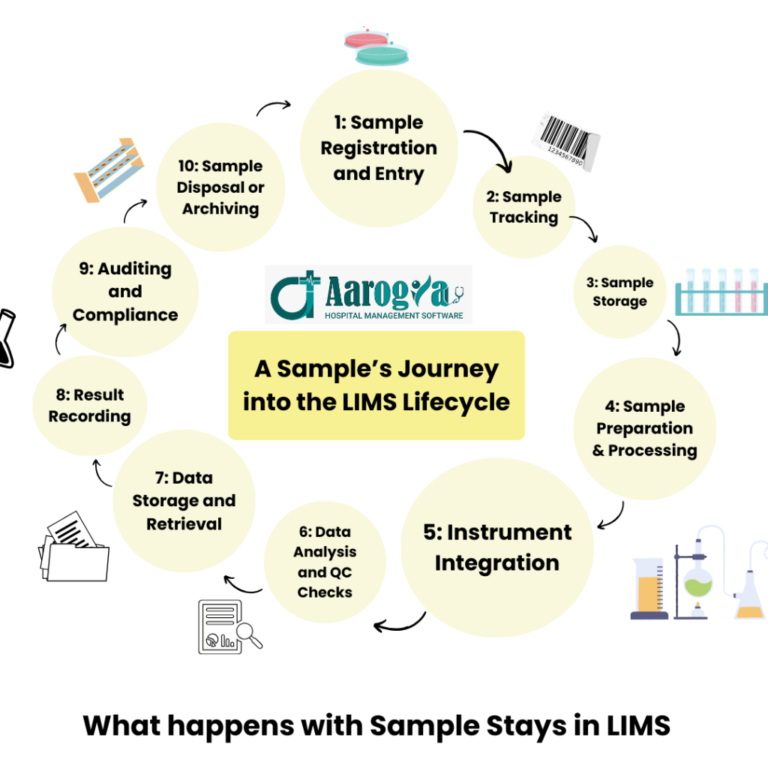
Sample Lifecycle in LIMS
Sample Registration and Entry:
The first step is always sample collection. Samples are collected from various sources, and relevant information (e.g., sample type, date, location, patient details) is recorded. LIMS helps avoid cumbersome use of spreadsheets and other traditional ways of data storage. LIMS helps save time and reduces error by entering data once–and only once–with any of the following methods:
- Integration with an electronic record or laboratory information system (LIS) or through automated interfaces with instruments or other systems.
- Barcode scanning
- Manual entry
Sample Tracking: Once the sample data is stored the next question is how to track where it’s going. LIMS thus assigns a unique identifier (RFID tags, barcodes etc.) linking sample’s associated data to each sample to ensure accurate and traceable tracking throughout the entire process. This way technicians can keep track of the sample’s location, status, and any changes in its journey through the laboratory.
Sample Storage: There are some kinds of tests where samples are required to be stored before processing. LIMS has a key feature of maintaining a comprehensive inventory of all storage locations within the lab including freezers, refrigerators and other storage units. It tracks the availability of storage spaces and assigns specific locations for each sample based on predefined criteria such as sample type or priority ensuring easy retrieval when needed. LIMS also monitors and records the storage conditions like temperature and humidity.This feature ensures sample integrity as it generates alarms if the storage conditions deviate from the specified range.
Sample Preparation & Processing: As different samples have varying nature, types and tests to be conducted, the LIMS helps guide lab technicians through the sample preparation process which may involve aliquoting, centrifugations and other preparation steps. Another key feature of LIMS is that it provides predefined protocols or standard operating procedures (SOPs) and Quality Control (QC) measures ensuring consistency, accuracy and proper workflow at each step in sample processing.
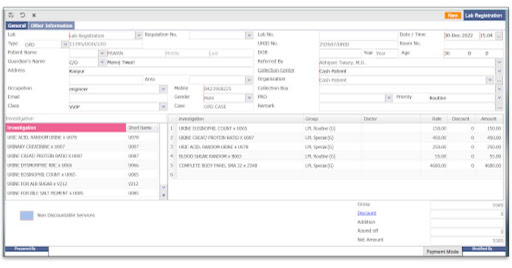
Lab Registration Entry Using Aarogya
Instrument Integration: Well, well!! This is our favorite feature of LIMS. LIMS can seamlessly integrate with and feed control files into laboratory instruments, machines and equipment directing their operation on a sample. Real time data and instruments analytical results flow effortlessly from machines & instruments to LIMS warding off manual data entry errors. LIMS captures and links these results directly to the corresponding samples, speeding up the overall process as results immediately avail themselves in the electronic system. Another amazing feature is that since LIMS monitors and keeps records of instrument health, scheduling their maintenance, calibration or repair, it won’t permit a specific task until making sure the instrument is within control and the executing personnel has a renewed certificate.
Data Analysis and Quality Control Checks: As already discussed above, LIMS has built-in Quality Control(QC) Checks that verifies if the sample meets the criteria at each stage of processing. If LIMS finds out that there’s even a slight deviation, outlier or anomaly from expected values it triggers alerts, signaling the need of deeper investigation or manual intervention. It ensures accuracy and most importantly saves time as the issue can be solved at the particular step curbing further advancement of wrong analysis till the result, which will require another run through.
Data Storage and Retrieval:
At each processing stage,laboratory technicians enter relevant data into the LIMS. Annotations,comments or additional information related to the sample processing are recorded.This feature enhances the completeness of the sample record and provides valuable context for future reference. Authorized personnel can retrieve and review data easily, ensuring data integrity and compliance with regulatory requirements.
Result Recording, Report Generation and Communication:
Once the analytical results are recorded in the LIMS, it generates reports or certificates providing a comprehensive overview of results. LIMS helps in easy access and sharing of these reports facilitating communication within the laboratory and with external stakeholders.
Auditing and Compliance:
It is crucial that samples don’t go into the wrong hands, hence, throughout the sample lifecycle LIMS maintains an audit trail documenting information about who accessed the sample data, when, and if there’s any modification made. This LIMS feature ensures sample traceability, integrity and compliance with regulatory standards.
LIMS also has a feature which ensures that laboratory reports are verified and digitally signed by a registered medical practitioner, as per the MCI guidelines, in line with the Supreme Court’s ruling.
Sample Disposal or Archiving:
We’ve finally arrived at the final stage of the sample journey which involves the disposal of samples according to the established protocols and regulatory guidelines. LIMS may include functionality to manage this process, ensuring that samples are disposed off responsibly and in compliance with applicable regulations.
Wrapping up
LIMS is a solution for laboratories that want to provide better healthcare. It simplifies the sample testing process, ensures data quality and compliance, and manages the lab finances. LIMS also benefits the patients by giving them faster and accurate reports, real-time updates, and easy access to their results.
However, not all LIMS are equally good. You need a LIMS that is tailored to your specific needs, preferences, and budget.
That’s why we recommend you to use Aarogya, the best LIMS solution in the market. Aarogya is a cloud-based, scalable, and secure LIMS that offers you all features and functionalities required to manage your laboratory.
It is a complete laboratory management solution that helps you optimize your performance, productivity, and profitability. Whether you are a small, medium, or large laboratory, Aarogya can help you manage everyday lab operations efficiently.
Try Aarogya for yourself and see the difference.
Contact us at +91 94154 06213 for a Free Demo or Visit our website for more information.
